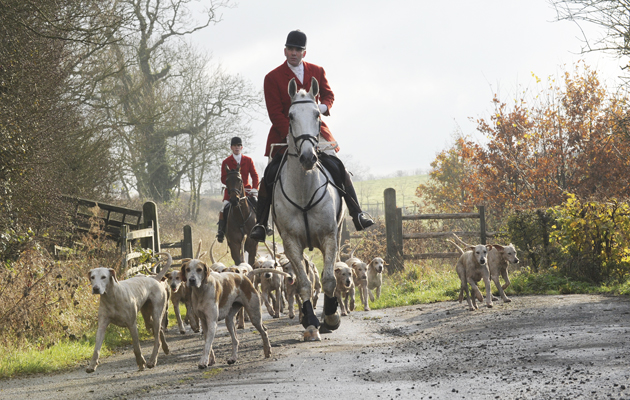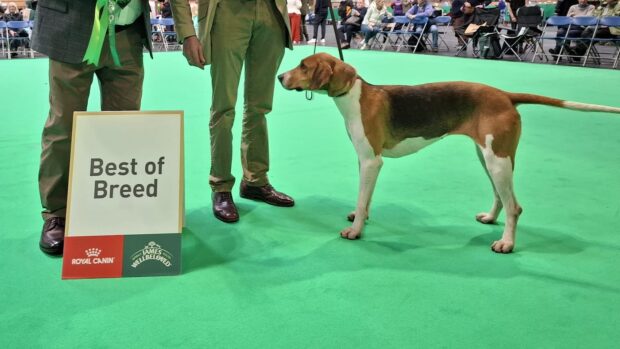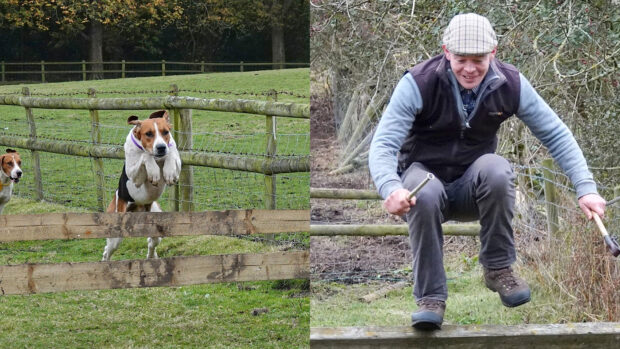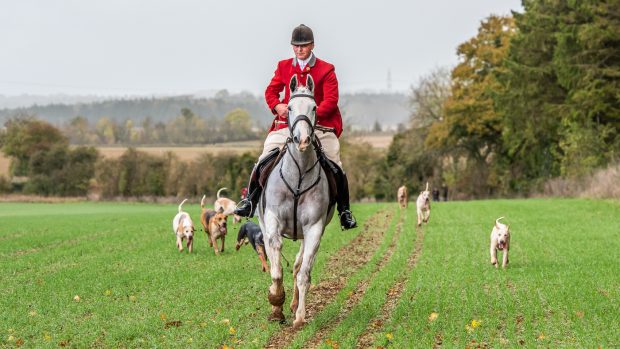Dog, pooch, mutt, Fido, pup, Rover or hound – there are many names we can apply to man’s best friend. But they’re not necessarily accurate, with some of these names actually being technical terms. While most of these names are generic, there is a difference between hound breeds and dogs.
Hounds vs dogs
A hound is a dog, but a dog is not always a hound. Hounds are distinct from other groups of dogs in their exceptional ability to hunt and track live prey. There are two main types of hound, sighthounds and scent hounds, and both have a strong prey drive.

A deerhound
Sighthounds
These hounds rely on their eyesight to spot motion from a considerable distance and their impressive speed to pursue their prey. They are typically very athletic and lean, with small heads, deep chests and narrow waists, being built to run fast. The more commonly known sighthounds are whippets and greyhounds; other less familiar breeds are salukis, Irish wolfhounds, borzois and Spanish galgos.
Unlike scent hounds, sighthounds tend to be quiet. Due to spotting their prey from afar and zooming up on them by speed and stealth, a loud voice is not required.
They tend to run extremely fast – up to 40mph – for a comparatively short time, and then be happy to spend the rest of the day snoozing. Sighthounds take the majority of top spots when the fastest dog breeds are ranked.

The English Foxhound
Scent hounds
These hounds rely on their sense of smell and endurance to hunt down and track their prey, in the form of lines or trails in the hunting field. Stamina is their key physical attribute, over the speed of the sighthounds.
They typically have huge noses with wide nostrils that give them superior sense of smell. Their ears tend to be longer and droopier than other breeds – these capture scent as they trail on the ground, and waft it towards the nose, enabling them to hunt even more efficiently. They are heavier, stockier dogs than the lithe sighthounds, and lower to the ground, making them closer to the trail of the scent. Scent hounds such as foxhounds and harriers, that have been selectively bred to hunt trails with riders on horseback, will have longer legs for increased speed than those who accompany hunters on foot, such as basset hounds and beagles.
Because of their exceptional scenting ability, scent hounds can also be trained as sniffer dogs. Bloodhounds, for example, have 300 million scent receptors, more than any other breed.
Scent hounds are bred to hunt in packs, and therefore they not only have a good nose, but a great voice. This is so that they can alert their handler and the rest of the pack that they have picked up a certain scent – but it’s not always deemed quite so musical in a domestic setting!

Not a hound but a working dog, this cocker spaniel retrieves a pheasant on a shoot
If the dog hunts, is it a hound?
There are other types of dog used in hunting situations that are not hounds. For example, spaniels, labradors and retrievers are very popular working dogs, used for shooting. Once, for example, the pheasant has fallen, the working dog will use his scent to find the dead bird and bring it back to his handler. Whereas hounds hunt down live prey, either by scent or sight, rather than retrieving fallen prey.
Hounds have been bred over hundreds of years to work independently. They are certainly trainable, but both sight and scent hounds tend to have a one-track mind once they have their eyes or nose on their prey, and can be difficult to distract from the job they were bred to do. While hounds are primarily working dogs, they can make great pets in a knowledgeable home.
You may also enjoy reading…

Hounds come in all shapes and sizes (just don’t call them dogs…)

All about the beagle

All about the bloodhound

All about the foxhound

All about the greyhound

A beginner’s guide to trail hunting: all your key questions answered

10 British dog breeds everyone should own (at least one at some point in life)

Meet 7 of the largest dog breeds on the planet

Subscribe to Horse & Hound magazine today – and enjoy unlimited website access all year round
Horse & Hound magazine, out every Thursday, is packed with all the latest news and reports, as well as interviews, specials, nostalgia, vet and training advice. Find how you can enjoy the magazine delivered to your door every week, plus options to upgrade your subscription to access our online service that brings you breaking news and reports as well as other benefits.




